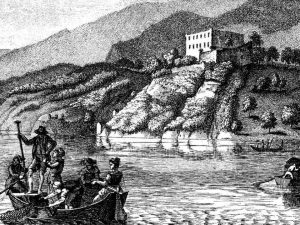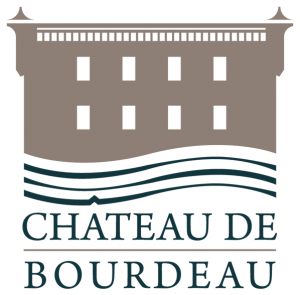A long history

The château was built in the 11th century on the ruins of a Roman castrum. According to the writer Albanis de Beaumont, it is one of the oldest in Savoie. Owned by the Seyssel family from 1263, it was bequeathed to the Jesuits in Chambery in 1671 who quickly sold it to Claude Antoine Sallier of the Tour de Cordon, first judge of the Court of Auditors. HIs descendants retained it until the Revolution. It was in damaged and sold as a national asset.
After the first work had been carried out by the lawyer from Chambery, Antoine Métral in 1810, the château owes its final restoration to Joseph Giraud and Pellegrini, the architect of the Thermal Baths, the Grand Cercle Casino and several hotels in Aix-les-Bains during the 1850’s and 1860’s. In the 1870’s, it was purchased by the Gigot de Villefaigne family, a family who emigrated to Russia and several of whose members were jewellers to the Tsars.
The château is known in the world of literature: Montaigne refers to an arms factory there on his return from Italy in the 16th Century. Honoré de Balzac also stayed in Aix-les-Bains and gave a romantic and detailed description of the Lake le Bourget in his novel La peau de chagrin in 1831 while George Sand chose it as the setting for her novel Mademoiselle la Quintinie and renamed it Turdy in 1861. At the end of the 19th Century, Queen Victoria visited the owners on several occasions. She wrote in her personal diary, «The view from the château’s terraces is superb. We descended by an old staircase to an old terraced garden, which steeply overhung the lake, which was so beautiful and so calm. The reflection of the mountains was so intense that it gave the impression that it was an extension of the view. »
Lamartine’s footprint
Alphonse de Lamartine is an historical character whose talent and destiny left a mark on the entire lake area by conferring on it the undisputed title of the capital of the French Romantic Movement.
While staying in Aix-les-Bains in 1816, the poet met Julie Charles. The Bourdeau beach and the natural cave above it were the places that nurtured their romance until Julie’s death in December 1817. This tragic loss had a marked effect on the poet and partly inspired the anthology Méditations poétiques (1820). Drawing inspiration from the natural sensitivity emanating from the lake and its surrounds, he also wrote his finest poems (notably Le Lac in 1820) and his novel Raphaël (1849).
One of the places where he liked to stroll was the cave at Bourdeau. Head for the inlet and the little port, then take the little path with steps. This path will take you to a little stony beach, where you will find the cave. Lamartine let his gaze wander and his imagination drift towards the waves of Lake le Bourget.
One evening, do you remember? We wandered in silence,
All we could hear from afar, over the waters and below the skies,
was the sound of the rhythmic strokes of the rowers
Your harmonious waters.“Le Lac” Alphonse de Lamartine
2016: The year of renaissance
In increasingly harsh world, people have returned to the château as a haven of peace, a refuge for body and soul. Because of its position, it basks in the land of the Romantic Movement which helps the visitor rediscover a direction in life. Each of the seven rooms has been designed to inspire travel. They have all been designed, furnished and laid out to tell a story.
The château is also open to the business world (seminars, conferences…) and is also used as a cultural centre (exhibitions). The library features 47 photographs of our greatest actors and actresses in their dressing rooms waiting to go on stage, with their personal definition of « what does a theatre dressing room mean to you? ».
A south-facing terrace overlooking the lake and the surrounding massifs is a place where you can come and admire the scenery, read or meditate. You can also enjoy breakfast and lunch there.
There is a cellar to introduce you to or give you a taste of marvellous wines principally from the Alpine Arc. In the middle of the cellar, sits an imposing fireplace which enables you to enjoy a more rustic, simpler cuisine suited to drinking these delights. The old-world chateau style is also to be found in the wood-burning grate which connects the dining and breakfast rooms.
Lastly, theme-based days and holidays are offered in the château: lake techniques, discovering the flora and fauna, film previews, cookery lessons, fashion shows, “nature therapy” and wellness classes (relaxation, meditation), vineyard visits … A host of sense-based activities to help you get back to life’s essentials.
